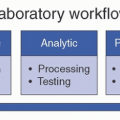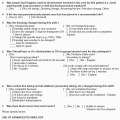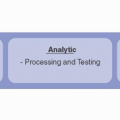Developing an Occupational Infection Prevention Program
Mark Russi
A medical center-based occupational health service fulfills a range of functions. Many, such as employer-sponsored wellness or disease management initiatives, monitoring and interventions around chemical or physical hazards, triage and care of injuries, and a host of others that do not directly support infection prevention will not be discussed in this chapter. The focus instead will be on those programs, initiatives, and clinical activities traditionally carried out by an occupational health service that impact the safety of both healthcare personnel (HCP) and patients with respect to infectious disease hazards. Because other chapters will address in greater detail pathogen-specific guidance around surveillance, infection prevention, and postexposure management, the emphasis here will be on the approach, infrastructure, and organization required to carry out those activities effectively. In an overarching way, occupational health efforts to support infection prevention can be divided into those that take place outside the occupational health clinic itself to establish and support policies, standards, and workplace monitoring to prevent transmissions; and those that take place within the clinic to respond to the demands of disease surveillance, maintenance of immunity, clearance to work, and postexposure management.
The former group of activities should include the following:
Assessing healthcare-related infectious hazards and establishing policies to respond to them
Establishing a means to monitor the frequency and characteristics of certain contagious pathogen exposures across a medical center, with a mechanism to address them and reduce their occurrence
Collaborating with infection prevention and other groups to ensure effective interdisciplinary institutional responses to infectious hazards
Organization and selection of training programs to ensure HCP understand how to protect themselves and their patients from infectious hazards
Communication with leadership to bring employee health and infection prevention concerns to the fore
While the latter group includes the following:
Preplacement and episodic evaluations of work fitness with respect to infectious hazards, vaccinations, and immune status
Postexposure follow-up interventions: bloodborne pathogens (BBP), meningococcus, varicella, measles, mumps, tuberculosis, pertussis, etc.
Record-keeping, access, and use of data
ASSESSING WORK-RELATED INFECTIOUS HAZARDS AND ESTABLISHING POLICIES TO RESPOND TO THEM
Ideally in a medical center setting, a well-developed infection prevention and safety infrastructure prevents
exposures from occurring, reduces injuries, and results in less work-related illness. Key to the establishment and functioning of such an infrastructure is collaboration with infection prevention, human resources, and others to establish a set of occupational health policies, and to update them on a regular basis. Those policies must address both what infectious agents pose hazard to HCP, and which agents may be passed from HCP to patients. In addition, general workplace expectations around clearance to work and standards of behavior should be included.
exposures from occurring, reduces injuries, and results in less work-related illness. Key to the establishment and functioning of such an infrastructure is collaboration with infection prevention, human resources, and others to establish a set of occupational health policies, and to update them on a regular basis. Those policies must address both what infectious agents pose hazard to HCP, and which agents may be passed from HCP to patients. In addition, general workplace expectations around clearance to work and standards of behavior should be included.
Several infectious hazards merit specific mention. Since 1994, the U.S. Centers for Disease Control and Prevention (CDC) has had detailed guidance in place for the management of tuberculosis in medical centers. That guidance was updated in 2005, and more recently in 2019.1,2,3 While specifics are addressed elsewhere in the textbook, suffice to say that occupational health should be intimately involved in the drafting of policies to address management of tuberculosis exposure in the workplace, including expectations around surveillance, initial work clearance, exposure follow-up, and management of HCP with latent tuberculosis. Under separate guise and as required by the U.S. Occupational and Health Administration (OSHA), a respirator policy should exist to set expectations around respirator use for the care of patients in airborne-isolation room (ie, negative pressure, air exhausted directly to the outside, and >12 air exchanges per hour), including respirator training and annual fit testing for HCP designated to render care in such settings. In its initial cost impact estimates, OSHA estimated that ˜5%-10% of HCP would be required to undergo annual fit testing. In setting up institutional expectations for annual fit testing, the anticipated volume of patients requiring airborne isolation should be taken into account. While some patient care areas may require only a limited number of HCP to maintain annual fit testing, for others such as the emergency department or medical intensive care unit, a higher proportion of HCP should be in an annual program. The policies also should address how fit testing will be carried out, whether with qualitative or quantitative test systems, whether centralized or through departmentally based fit testers, and how the data will be tracked. See also Chapter 23 Mycobacterium tuberculosis for more information on these topics.
Bloodborne pathogen exposure remains a substantial hazard to HCP, and workplace policies should address both the requirements under the OSHA Bloodborne Pathogen Standard for an annually updated Exposure Control Plan (ECP), and the need to provide detailed institutional guidance around management of potential bloodborne pathogen exposures. OSHA mandates that an ECP address a range of issues including which HCP are reasonably anticipated to be at risk for exposure, how the institution evaluates and implements sharp devices with engineered safety features, elements of annual training, and how exposure incidents are recorded in an OSHA log. The Bloodborne Pathogen Standard also requires that clinical management of exposures take place in accordance with currently applicable U.S. Public Health Service guidance4. In drafting institutional policies to address bloodborne pathogen exposure, current CDC guidance applicable to human immunodeficiency virus (HIV), hepatitis C virus (HCV), and hepatitis B virus (HBV) exposure should be utilized.5,6 Of paramount importance are the establishment of offhour immediate availability of services to exposure HCP (generally through an emergency department); a standardized approach to ascertainment and communication of source patient testing information; a capacity for rapid triage and administration of postexposure prophylactic antiretroviral medication; sets of standardized orders for both source patient and exposed HCP testing; availability of infectious disease consultation when needed to assist emergency medicine or occupational medicine clinicians; standardized protocols for follow-up serological or polymerase chain reaction (PCR) testing; and provision of all such services at no cost to the exposed HCP.
Policy also should be in place to address institutional expectations around a wide variety of other infections that may threaten HCP, or be transmitted from HCP to patients. Those policies should address screening requirements at time of hire, what if any annual surveillance requirements must be adhered to, and what vaccinations will be required. Collaboration with human resources is necessary to establish timelines for adherence to such standards, as well as the consequences for nonadherence. At a minimum, the policies should address institutional requirements for vaccination or demonstration of immunity at time of hire for measles, mumps, rubella, varicella, pertussis, hepatitis B, and influenza. How documentation for immunity will be tracked, and how communications to managers around issues of nonadherence should be managed must be addressed as well. Specific criteria to document immunity in healthcare settings have been established by CDC, and are detailed elsewhere in this textbook (see Chapter 37 Vaccination of Healthcare Personnel). Policies should be established to manage HCP who cannot receive vaccinations for a sound medical reason, such as an immunocompromised individual nonimmune to measles who cannot receive live vaccine. Such policies should be nonpunitive, nonstigmatizing, and adequately protective. With respect to measles, mumps, rubella, and varicella, a nonimmune individual who for sound medical reasons cannot receive vaccine should not be assigned to care for patients known or suspected to be infected, regardless of the level of personal protective equipment available.
Policies applicable to hepatitis B vaccination must be consistent with requirements under the OSHA Bloodborne Pathogen Standard, namely that vaccine be offered free of charge to all at-risk HCP. How immunity is demonstrated, as well as management of vaccine nonresponders, should be included as well. Policies around influenza vaccination should strive to maximize the proportion vaccinated, consistent with CDC 2020 goals; address how vaccination data are tracked for both medical center employees and nonemployed HCP accessing the medical center; and lay out consequences of policy nonadherence and, in the setting of mandatory vaccine programs, whether and which types of medical or religious exemptions from vaccination are permissible.
Occupational health should be intimately involved in workplace policies that address absenteeism for workrelated or non-work-related infectious illness as well. For a range of infections, such as diarrheal or febrile respiratory illness, CDC guidance should be referred to. While a discussion of specific infections is beyond the scope of this
chapter, policies should address work clearance through occupational health for individuals returning to work following an infectious illness, generally calling for HCP to be free of fever and diarrhea for at least 24 hours. Requirements may be stricter based upon local or state public health requirements, such as with infections due to Salmonella or Shigella species. There also are specific infections (eg, influenza among HCP working with patients in protected environments or norovirus) where standards for return to work may also be stricter.
chapter, policies should address work clearance through occupational health for individuals returning to work following an infectious illness, generally calling for HCP to be free of fever and diarrhea for at least 24 hours. Requirements may be stricter based upon local or state public health requirements, such as with infections due to Salmonella or Shigella species. There also are specific infections (eg, influenza among HCP working with patients in protected environments or norovirus) where standards for return to work may also be stricter.
For the broad range of workplace policies established by infection control that pertain to standards of patient care around isolation precautions, as well as specifically to certain high-priority infections (eg, methicillin-resistant Staphylococcus aureus [MRSA], Clostridioides difficile, catheter-associated urinary tract infections [CAUTI], central line-associated bloodstream infections [CLABSI], and surgical site infections [SSI]), occupational health should participate as a reviewer of proposed or updated policies, weighing in specifically on implications to HCP and the specific actions required under certain postexposure scenarios.
MONITORING, ADDRESSING, AND REDUCING EXPOSURES TO HEALTHCARE PERSONNEL
A key element in an occupational health and safety program is the establishment of a means to track and trend data pertaining to work-related exposures, injuries, and illnesses. Important to such a program is a user-friendly interface for HCP to report their exposures and injuries. HCP should be trained on methods to as well as encouraged to report these events. In addition, supervisors should be capable of assisting the process. The reporting mechanism, in general, should be accessible via computer workstations to all personnel, and it should require that for each exposure or injury, a supervisor documents that the event has been discussed with the HCP. Ideally, every exposure or injury results in a dialogue between an HCP and his/her supervisor regarding how the event might be prevented in the future. While most HCP exposure/injury reporting systems have concentrated on actual injuries or exposures, there is a benefit in establishing a parallel mechanism for HCP to report unsafe conditions or near-miss events that did not result in injury or exposure.
In addition to reports of injury or exposure serving as the raw data to generate OSHA-mandated annual incidence reports, they should be tracked and trended in order to identify which departments or job titles appear to have excessive tallies or rates of exposure. An ongoing process of monitoring such data, along with a prioritization scheme to address high-hazard areas, is important in establishing practices to reduce exposure. With potential bloodborne pathogen exposure as an example, central monitoring of data around needlestick injuries or mucous membrane exposures to blood and/or other potentially infectious body fluids can identify when and where exposures are on the rise relative to past levels, how incidence in a specific area compares with other similar areas, and whether there are specific devices associated with a rising exposure level. When a risk area is identified, occupational health should work collaboratively with frontline and supervisory staff in that area to examine how incidents are occurring, whether product substitution or additional training is called for, and whether any change in specific clinical practices should be considered. Whenever a department or group is singled out for intervention, HCP in the affected area should be educated around the program, and data should be tracked to determine whether injury rates appear to be impacted.
In addition to potential bloodborne pathogen exposure, data on exposure numbers and outcomes should be tracked whenever unprotected exposures occur to patients with tuberculosis, measles, mumps, meningococcus, varicella, and a range of others. Since such exposures generally result from an infectious patient having been cared for without appropriate isolation precautions, data on where such exposures occur most frequently and how many individuals are affected are useful when addressing proper triage and initial clinical assessments of patients who may harbor infectious illnesses. Institutional thresholds for negative pressure isolation or imposition of droplet and/or contact precautions, as well as proper training of HCP on use of personal protective equipment may need to be addressed.
While it may be tempting to set up institutional targets, or even reward areas that accomplish reductions in HCP injuries or illnesses, the establishment of any incentive that could result in the unintended consequence of HCPs feeling discouraged to report exposures or injuries must be strictly avoided. Workplace exposures and injuries are best prevented when all HCP understand that reporting is both encouraged and expected. Such an understanding enhances the quality of data that are tracked and trended, and results in a more robust safety culture.
COLLABORATIONS TO ENSURE EFFECTIVE INSTITUTIONAL RESPONSE TO INFECTIOUS THREATS
Medical centers occasionally experience events that may place substantial numbers of HCP or patients at risk for transmission of an infectious agent. While many such events, such as an active tuberculosis patient cared for outside of airborne precautions for a limited number of days, occur frequently enough that protocols for contact tracing and follow-up are generally well established and familiar to HCP, others may call for an interdisciplinary institutional response of greater complexity. Examples might include the admission of a patient with febrile illness returning from a region of the world where transmission of Ebola is occurring, the discovery of active measles in a patient cared for in an open emergency department setting for more than 24 hours without the imposition of airborne precautions, or the admission of a researcher with febrile illness who has had laboratory exposure to a Category A high-priority bioterrorist agent as defined by the U.S. Centers for Disease Control and Prevention (CDC).
Stay updated, free articles. Join our Telegram channel

Full access? Get Clinical Tree






